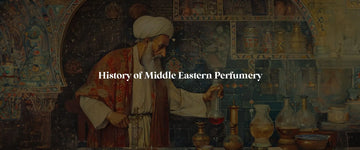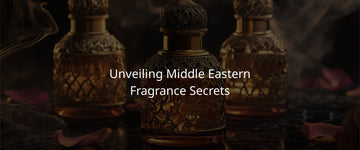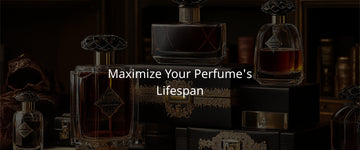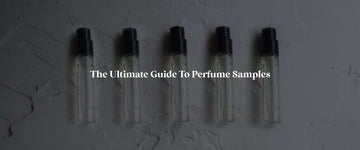Perfumes have been the pride of most humans since the beginning of time. With a variety of scents ranging from sweet to spicy, musky to floral, people have different preferences for Middle Eastern perfumes. Yet, all share a common love for fragrances and meet one end goal, which is to smell good and appear presentable.
While perfumes have been around for centuries, they have seen their history emerge from areas such as Ancient Mesopotamia, where a chemist uses different methods to come to a perfume that lays the foundation for all future perfume recipes.
Middle Eastern Perfume History
Moving on, let's look at the history of Middle Eastern perfumes, especially in Islamic countries, and their Islamic history.
One process that was used particularly was Steam Distillation, which was typically used in producing old-school Middle Eastern perfumes and used ingredients such as Oud, Myrrh, Sandalwood, or even Rose.
With its Arabic background, the love for perfumes spread fast, as perfume is highly regarded in Islam due to its relative cleanliness and odor of good all day. Combined with the floral scents used for women and musky scents used for men, it wasn't long before perfumes rose in popularity throughout Middle Eastern countries.
In some of the Iranian areas, perfume makers used ingredients such as rose, which were needed to give the fragrance its rosy scent, which was light on the body and represented a meaning of love as well as freedom and was adorned by women all day long.
Not only perfumes but incense were also deemed important in Arabic history, which further cemented the use of perfumes all the more in Middle Eastern countries.

Persian Processes And Chemists
A further improvement to the perfume industry was brought forth once the Persian chemist Ibn Sina used a process known as distillation and made Middle Eastern Perfume all the more accessible.
The distillation process would involve taking different flowers that would come in handy, such as roses, which was his first venture, and would take out the oils that were incorporated within these flowers to take out their scent.
After that, the scents would be mixed with different ingredients, specifically oil, to bring forth the perfume mixture, which could then be finalized with ingredients such as Musk or Sandalwood to cater to the masses.
European Followthrough
After seeing the height of popularity in Persia, the history of Middle Eastern perfumes rose even more and made its way to European countries.
The main way they were brought to Europe was through trade routes connected to Middle Eastern countries, and the different processes and ingredients that were originally used in areas such as Persia were brought into Europe and adapted into their perfumeries.
These perfumes started to gain popularity as early as the 11th century, after which the distillation processes gained sight and were used to make perfumes, after which they were released to the general public.
In the 13th century, a more modern perfume was created for the first time, which essentially mixed different oils with scents such as Rose or Musk and would be incorporated into diluted alcohol to make a perfume that would evaporate after a while but provide a long-lasting scent that would make anyone smell amazing.
The Importance Of Middle Eastern Perfumes
One of the main reasons that the history of Middle Eastern Perfumes has seen so much rise over the past few centuries is due to its originality.
Not only does a Middle Eastern perfume have a long-lasting smell, but it lasts the longest, to the point that it can stain and leave a lasting scent on clothing that can't be washed out easily until scrubbed over and over.
Middle Eastern perfumes also provide a sensual attraction, making both men and women appear all the more alluring.
Conclusion
While perfumes have been famous in areas such as Russia, France, the USA, Europe, and even Great Britain, no one can ignore that nothing can beat the allure of good Middle Eastern Perfumes.
They started from Islamic chemists and continued to spread as their popularity grew. With that, let's wrap up the history of Middle Eastern Perfumes!





